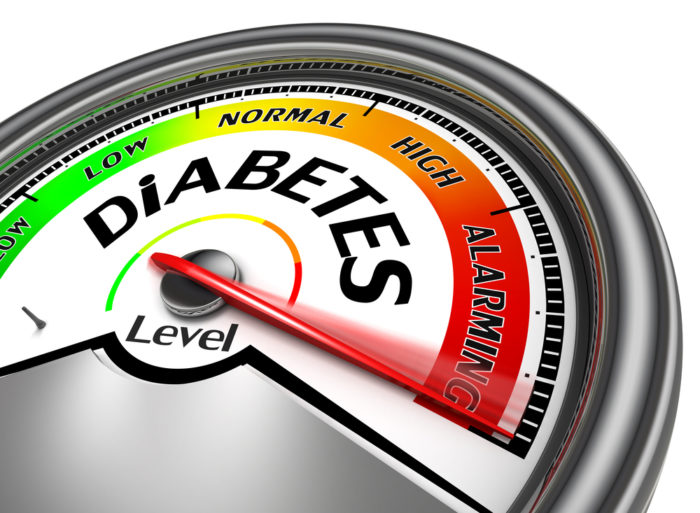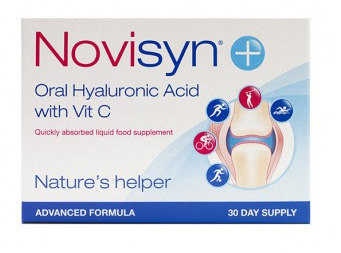
Can we halt the rise in diabetes by 2025?
August 5th, 2021This year sees the 100th anniversary of turning diabetes from a death sentence to a condition with the use of life-saving insulin. The International Diabetes Federation (IDF) estimated that 451 million people worldwide live with diabetes, with a projected increase to 693 million by 2045. Diabetes is a chronic metabolic disease that is the 5th most common reason for death. Roughly 1.6 million deaths are attributed to diabetes every year and diagnosis is at an all-time high. Global health authorities agreed on a target to halt the rise in diabetes by 2025.
A scientific report revealed a study that demonstrated the persistently increasing global burden of diabetes and variety by diabetic type, region and countries. It provided the relevant information for priority setting and planning of health services to achieve the WHO (World Health Organization) Global Action Plan for the prevention and control of NCDs such as Diabetes in 2025. There will be policies, resources and guidelines for diabetes education to change unhealthy lifestyles and effectively control those with obesity. The report suggests that one of the leading risk factors associated with diabetes is air pollution, relevant authorities will create policies to reduce indoor and outdoor pollution.
Recent events have increased diabetes awareness
The coronavirus has revealed how vulnerable the human race is and, as we know, those most at risk to die of the virus are the elderly and people who are living with health conditions and disease. It was well documented and in the headlines that diabetics are more likely to develop a severe illness if they get the coronavirus but it can vary from person to person. The pandemic has increased diabetes awareness and with 46% of people going undiagnosed for the disease, something good may come from something so bad.
Diabetes is an incurable, life-changing disease
Diabetes is a chronic disease that happens because the body is unable to use blood sugar (glucose) properly. The cause of the malfunction remains unknown but genetics and environmental factors play a part. By the time diagnosis is made, 1 in 3 people have complications with their heart, eyes, feet, kidneys or nerves. Having diabetes can also lead to sex-related and mental health issues. It’s a life-changing disease that remains incurable but ongoing research may lead to a full understanding and a potential cure.
Diabetes research
Research into the cause, prevention and management are ongoing including Type 2 diabetes remission to find out if weight management including a low-calorie diet can help people put their type 2 diabetes into remission. Specialists are researching Immunotherapy treatments that reprogramme the immune system so that it no longer attacks and destroys insulin-producing beta cells. There is the development of an artificial pancreas, a closed-loop insulin delivery system that monitors blood sugar levels and calculates the amount of insulin required, automatically delivering it through a pump. Experts are looking at ways to prevent amputations, tackle sight loss and cell transplants related to diabetes.
Diabetes technology
Diabetes technology has advanced in three ways – for taking insulin, checking blood sugar levels and different options to help maintain diabetes such as carb counters and ketone monitors. The most common way to deal with diabetes is with the use of an insulin pen or insulin pumps. Insulin pens can either have replaceable cartridges or non-replaceable cartridges that must be disposed of after being used. Insulin pumps such as the Omnipod DASH system holds up to 200 units of insulin and delivers continuous insulin therapy through customisable basal rates and bolus amounts. A continuous glucose monitor (CGM) is a small device that you wear just under your skin. It measures your glucose (sugar) levels continuously throughout the day and night, letting you see trends in your levels and alerts you to highs and lows. A flash glucose monitoring system measures your sugar (glucose) levels continuously throughout the day, if your sugar levels are going up or down and how your sugar levels change over time. It can show the past 8 hours so you can see what happens to your levels when you sleep at night. Easy patch mobile apps can be used to monitor and manage CGM and pump data in real time. Here are the 2021 16 best apps for managing diabetes – blood glucose trackers, food and exercise logs and more.
The most common types of diabetes are:
- Type 1 – which is when your body can’t make the essential hormone insulin. 8% of diabetics are Type 1
- Type 2 – which is when the insulin your body makes can’t work effectively or the body can’t produce enough insulin
- Monogenic diabetes is very rare caused by a mutation in a single gene
- Fibrosis related diabetes is the consequence of having cystic fibrosis caused by a gene mutation
- Pregnancy-induced diabetes happens when a woman’s body can’t produce enough insulin for her and the baby
What happens when you get low blood sugar levels?
We get glucose from the carbohydrates that we eat and drink, the hormone insulin, produced by the pancreas is needed to break down the glucose and allow it into our bloodstream. It can become difficult to manage and maintain sugar levels in the blood and diabetics can suffer a hypoglycemia (hypo) episode. This is when the blood sugar level is too, in severe cases it can cause a person to have a seizure or become unconscious. Glucose is the main source of fuel for the body and brain so a person doesn’t function well without it. A low blood sugar level is anything below 70 milligrams per deciliter (mg/dL), or 3.9 millimoles per litre (mmol/L).
No matter which type of diabetes someone has, the symptoms are similar.
- The need to wee a lot
- Being very thirsty
- Weight loss
- Tiredness
- Blurred vision
- Weakness
- Excessive hunger
- Headaches
- Mood swings
For those living with diabetes, taking too much medication, skipping meals, eating less than normal or exercising too much can lead to low blood sugar. Living with and managing diabetes can be challenging and complex. However, with expert guidance, a healthy lifestyle and a good management plan, people can live a normal life. Of course, the definition of a normal life is different to different people, the Coronavirus has once again highlighted how we should make the best of every day that we are blessed with.
Products worth a mention for diabetes management:
BloodSugarPro™ : Natural blend to aid the lowering of blood sugar/ glucose levels
What are the benefits?
- Natural, plant based dietary supplement
- Blood sugar management
- Helps to maintain a healthy blood sugar/ glucose level
- Supports an increased metabolism
- Promotes pancreatic health to aid in the improved production of insulin
- Weight loss aid and management
- Reduce carbohydrate cravings
Find out more about BloodSugarPro™ here: https://www.antiaging-systems.com/products/bloodsugar-pro/
Metformin (MetPro™): Reduce Cholesterol And Blood Sugar Levels With Metformin.
- The diabetes treatment reduces blood sugar levels, improving the body’s use of insulin.
- Reduces the amount of glucose produced by our livers and the amount absorbed through the stomach.
- Prevents low-density lipoproteins or ‘bad cholesterol’ from attaching to arteries and blood platelets.
Find out more about MetPro™ here: https://www.antiaging-systems.com/products/metformin-metpro/
Further Reading:
A scientific report https://www.nature.com/articles/s41598-020-71908-9
Continous glucose monitor
Flash glucose monitoring system
Easy patch mobile apps
https://appadvice.com/app/medtrum-easypatch-mmol-l/1450356817
16 best apps
https://www.everydayhealth.com/hs/type-2-diabetes-care/diabetes-apps/
Type 1
Type 2
*Use the same link
https://www.diabetes.org.uk/diabetes-the-basics/differences-between-type-1-and-type-2-diabetes
Monogenic
Fibrosis related
Pregnancy induced
https://www.nhs.uk/conditions/gestational-diabetes/
Hypoglycemia
Read stories
https://www.diabetes.org.uk/your-stories








